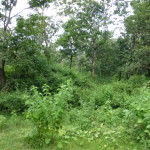
“You really need to come back in April and May,” the naturalists kept saying, as we considered our options for safaris – in late September.
May is the time before the monsoon season, the time of “the sere and yellow leaf.” The Kabini River is just a narrow river, rather than the broad lake of September after the rains have done their work. The land is dry. The foliage is thin. Migrating birds pass through. The mammals gather by the little water available, and have fewer places to hide…picture perfect for tourists. A friend said she was brought to tears by the plenty and the beauty on the evening boat safari she did You can travel along the Kabini amid a herd of hundreds of small-eared Asian elephants. Leopards and even elusive tigers become relatively easy prey for photographers.
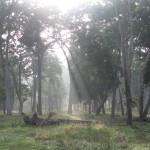
And then there is the wrong time of year, when we reached Kabini. Water holes abound in the Nagarhole National Park surrounding the river/lake. Foliage is thick, with abundant cover. Deer slip in and out of the brush like the baseball players in Field of Dreams. This is the season when you need to lower your expectations, and ramp up your patience. The charms might be more subtle, a bit harder to find, but might also be more fully appreciated as a result.
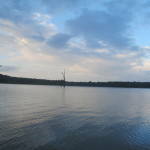
Unfortunately, most visitors do one safari on which they want to see it all. Even in the wrong season, they want to see lots of elephants, wandering leopards and prowling tigers. While we were there, one indignant Indian visitor complained loudly about not seeing the big three on his lone safari. “I could have gone to Africa and seen plenty,” he was reported to wail. True, the resorts could put a little more effort into managing expectations at the wrong time of year. But, even at the right time of year, Mother Nature might not put the animals in your path, for the wild is not the zoo that many want it to be. A few minutes, or odd weather, can make the difference between a memorable sighting and nothing. Even when tigers at Bhandavgarh National Park in Madhya Pradesh should be plentiful, for example, they can prove very elusive (click here to see our post on the experience we had there.)
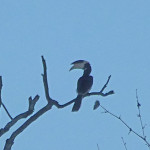
Ultimately, it’s a game of chance. To improve your probabilities, you need to visit different tables and roll the dice more. In India, we will have visited several of the national parks before we leave. At Kabini, we did three jeep safaris and a boat safari during our stay, with a mix of mornings and evenings.
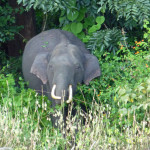
On the boat safari, we dealt with some brisk weather and splashing wind-blown wavelets. But in the lee of the forest we saw a number of colorful birds, including a flock of the huge, splendid Malabar Pied hornbills – at rest, a brilliant spot of yellow from its double-horned beak and, in flight, a tri-color glider. Some macaques and langurs swung on branches before us. And we were lucky to have a long look at a male Asian elephant, a tusker, peaking out from the bushy shoreline and then walking along the shore. No other boat trip had the same experience during our stay.
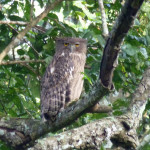
The first jeep safari bettered the boat for bird sightings, a troupe of wild pigs, and two rarities: a pack of wild dogs and a civet (or jungle cat). The second jeep trip brought us another tusker, and a ten-member herd of ox-like gaur.
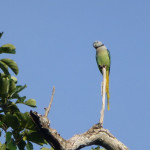
On both, we saw plentiful herds of spotted deer, so many that even the one-time safari visitors soon tired of them. We also got close to a larger deer, the chocolate-brown sambar, hiding in the bush.
The last safari was originally scheduled by boat, but we switched to jeep. Boy, were we glad we did, for otherwise we would have missed two early morning spectacles. One was a pack of wild dogs hunting a deer.
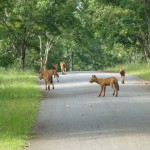
The other was so unusual, even in the right season, that our guide needed to spread the news all around the resort, showing off the photos we took to staff and other guests.
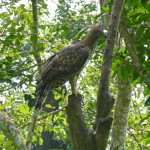
We happened upon three leopards lounging on tree limbs up to 4 meters high and just a few meters away from us. In a flash, spooked by our arrival, the youngest, a cub, leaped from a lower limb and disappeared into the brush. In a few moments, its mother clambered down the tree trunk, half sliding and half creeping, and followed the young leopard. The father, caught higher up on the tree, just stood and stared at us, presumably weighing the need to descend vs. the dangers of staying.
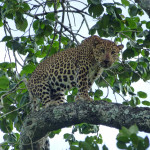
After a few minutes, he slowly made his way down, partly slinking along crevices in the tree and partly swinging branch to branch like a large spotted monkey. Another jeep of visitors pulled alongside just as he began his descent, but their slightly different timing made them miss the excitement.
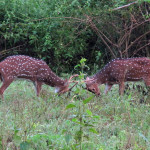
If all else fails, there is one kind of Indian safari in the off-season with a high chance of guaranteed results, one where you stay relatively still while all the action happens around you. That’s the ayurvedic massage safari. In this case, we become the delighted prey, of herbal oils and soothing pressure.
Our bodies were explored and treated in three stages. First, head and neck, in a sitting position rather than lying down. The masseur started with the crown, then worked over the face and finally kneaded the shoulders and upper back. Deep pressure alternated with light rapid movement and with many repetitions of gentle slaps upside the head.
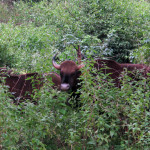
Then we lay down for the full body workover, in what we started calling the Shiva massage: four hands at once, Trust us on this one, it’s a really good feeling to have two massage specialists working you over, in tandem at times and in contrasting motion at other times. And not just lying on front and back, but on either side as well. Our inner tigers were purring.
Lastly, decompression, the equivalent of the joyful return home aglow with a nature safari’s sightings: We lay still for a while in a trance-like state, then were assisted like a feeble oldster into a teak-wood enclosure for a classic steam bath. Remember to followup with herbal tea, our two masseurs cautioned as we headed to the showers, and take some ayurvedic pills they gave us, “good for the stomach.”
Of course, by then we no longer cared what season we ended up here. Now is always the time for this purpose under the Kabini skies.
(Also, for more pictures from India, CLICK HERE to view the slideshow at the end of the India itinerary page.)


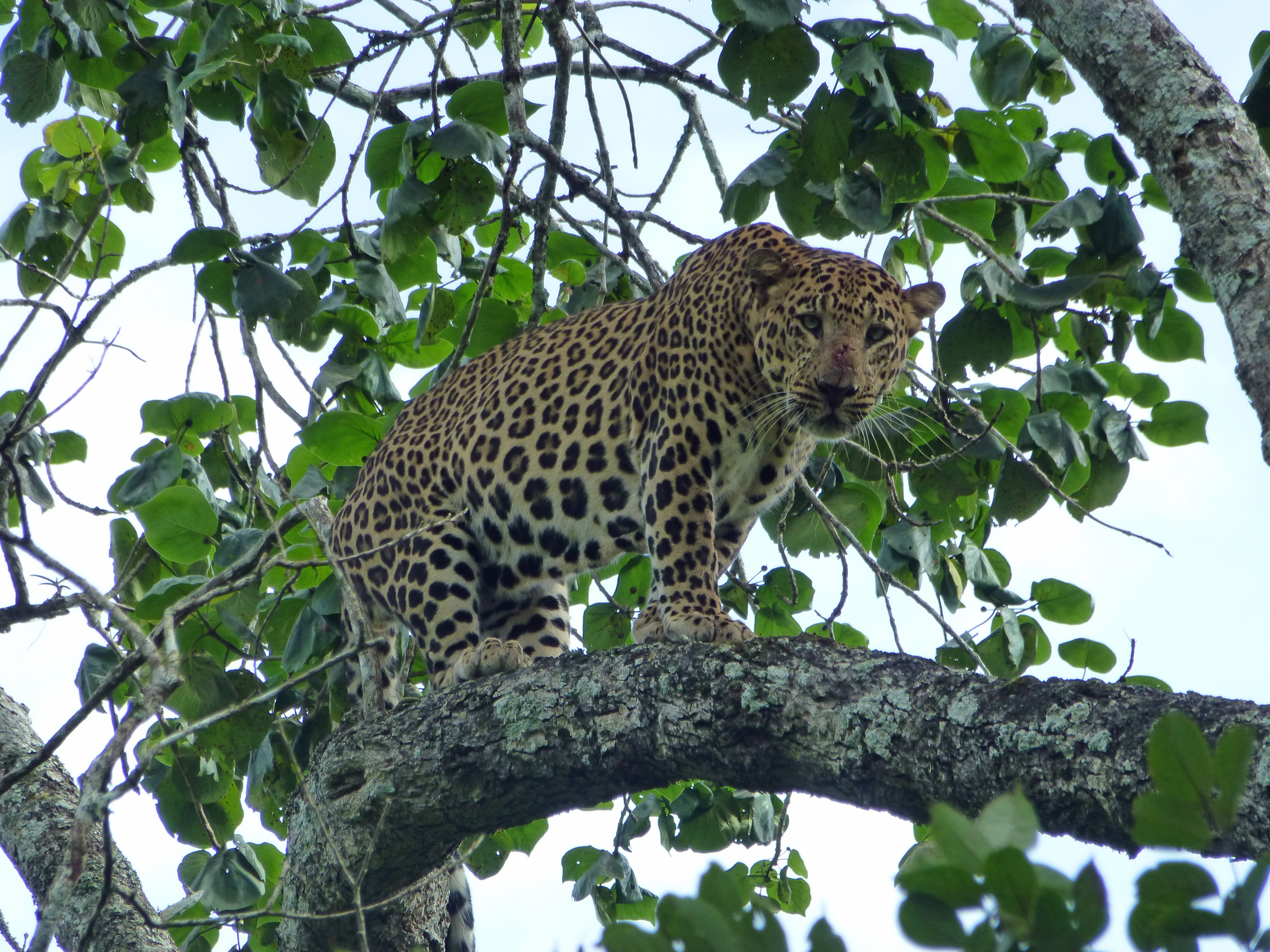
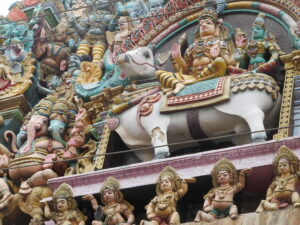
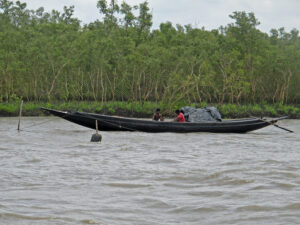
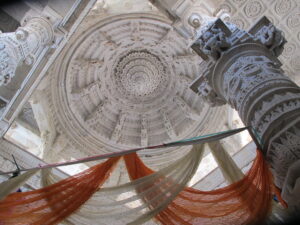
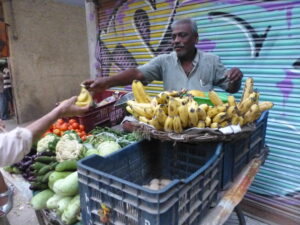
This makes me want to visit–again!